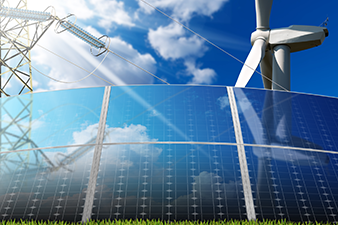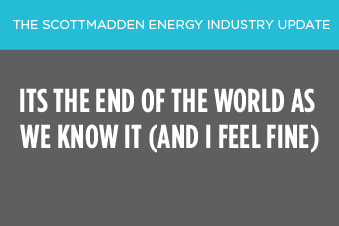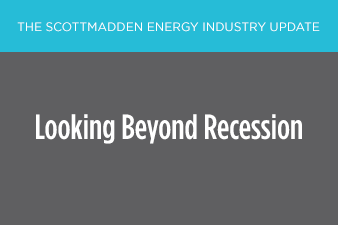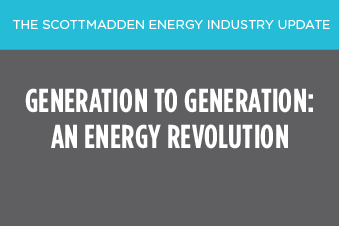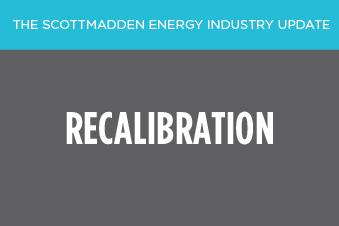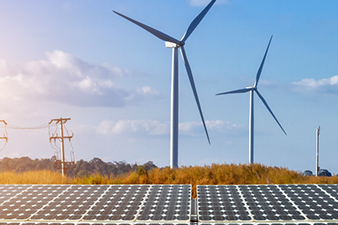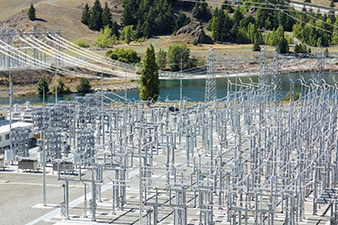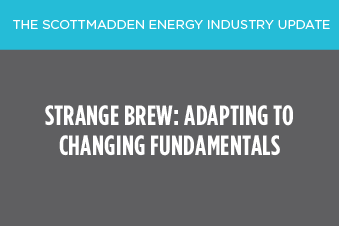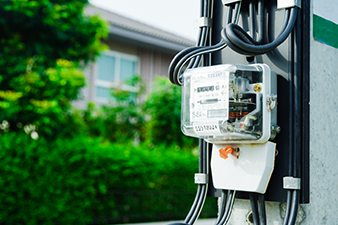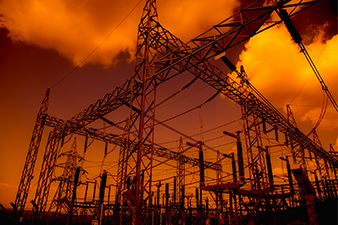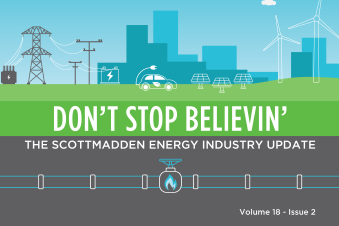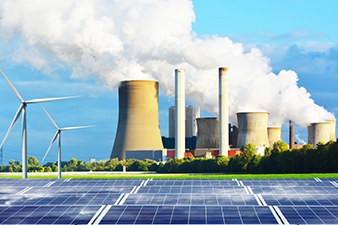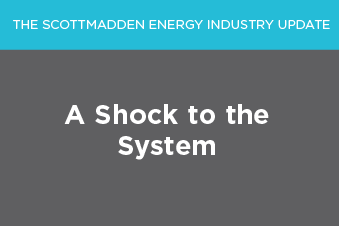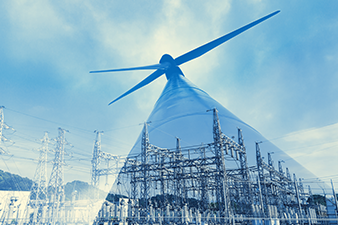
Energy efficiency programs, which have been a staple of utility services for many years, are receiving renewed focus. Specifically, energy efficiency (EE) not only provides savings to customers, but utilities increasingly see it as a necessary tool to achieve ambitious carbon-reduction goals. In these cases, utilities are facing a significant ramp-up in EE targets and budgets, prompting them to ask how to approach increasing the scale and scope of programs.
At the same time, there may be headwinds on the horizon for EE programs, as a confluence of factors may dampen EE’s growth. These factors include:
- As the cost per kWh of savings for measures other than lighting increases, gains from “low-hanging fruit” are already realized.
- In jurisdictions with a total resource cost test or benefit cost test driving EE budgets, as generation from renewables increases, the societal cost of carbon savings from EE decreases, as it is an increasing amount of carbon-free generation being avoided.
- Similarly, as energy demand peaks shift further into the late afternoon and evening due to increased solar generation and after work at home EV charging, the amount of peak savings provided by daytime EE measures, such as those that reduce residential-cooling demand or many commercial and industrial measures, is reduced.
Considering these challenges and others, in our experience, there are six keys to success in preparing for and successfully scaling-up utility EE programs:
1. Establish the Appropriate Energy Efficiency Incentives and Regulatory Treatment
The first step in scaling-up EE programs is to ensure there is a regulatory structure aligned with objectives. The structure should recover program costs, remove any financial disincentives, and encourage investments through performance incentives. As clean and renewable sources of energy increase, direct carbon reductions and customer cost savings may not be enough to justify the investment in EE on its own when many of the current cost benefit frameworks are applied.
A more complex cost benefit analysis may be needed to consider the incremental costs of other investments and measures needed to meet targets in lieu of deep energy efficiency improvements in states with significant decarbonization goals. This could include additional renewable energy and electric transmission and distribution infrastructure needed instead of energy efficiency.
Alternatively, some utilities are pursuing a simpler approach with more direct incentive mechanisms, specifically regulatory asset treatment. By doing so, utilities can earn a return on energy efficiency, similar to capital investments, and recover costs over time. This approach can provide utilities with an alternative or additional opportunity for earnings, advance economy-wide decarbonization policy objectives, provide customer benefits, and moderate bill impacts.
The complex and more direct approach to evaluating the costs and benefits of energy efficiency in achieving decarbonization goals carries advantages and challenges. Utilities and regulators will need to develop the appropriate incentives and regulatory structures necessary to facilitate the scale of deep efficiency needed to meet aggressive decarbonization goals for each jurisdiction.
2. Process Documentation and Standardization
A crucial element for scaling-up an energy efficiency program is the documentation and standardization of program processes and business support functions. Each program’s internal processes, tracked metrics, and touchpoints with internal and external stakeholders need to be clearly documented to establish repeatable, sustainable engagement with utility customers. Compliance with these documented standards will be pivotal during EE program ramp-ups, especially if more programs or different customer groups are added to the mix. The next step is for experts to examine all documented processes as a whole and determine if there are any gaps or opportunities to standardize processes across programs. Standardization can be based on elements such as multiple programs performing similar actions or programs utilizing the same implementing contractor (IC). Standardization can also drive the optimization of interactions with customers.
3. Targeted Automation and Data Management
Investing in technology and automation should be a top priority. Energy efficiency programs will benefit in the long run, as they can “plug and play” into standardized reporting and management frameworks. In our experience as an energy efficiency consulting firm, we have seen that one of the most common pain points for these programs stems from legacy platforms and manual tasks required for the customization of various programs. Legacy platforms require resources for program upkeep and increase the time required for teams to conduct tasks like eligibility checks, forecasting, and reporting. Not only will automating such tasks reduce operational timelines, but it will also increase accuracy and standardization.

In addition to automation, ensuring efficient and effective data management will enable utility programs to easily access data and conduct analysis and understand key trends. Identifying common program bottlenecks, such as long application processing times, or other critical areas like inconsistent communication channels between program administrators and ICs, can help programs identify what data to track and which metrics to report.
4. Management of Implementing Contractors
One of the most important day-to-day tasks for many utilities with an energy efficiency team is managing ICs. In order to reduce the complexity and amount of resources often associated with this task, teams should implement and enforce standardized program design elements, such as project pipeline reporting schedules and data uploads across ICs. Standardizing and enforcing contracts with incentives aligned between ICs and energy efficiency program goals can provide consistent and enforceable expectations. Our consultants have found that developing procedures for specific customer segments (e.g., residential vs. commercial) or similar programs is a valuable strategy. Some energy efficiency programs have selected only one contractor for similar programs within a customer segment. In this case, a larger contract may give the team additional leverage with the IC and, in turn, lead to more consistent interactions between parties to optimize customer experiences.
An important question to ask periodically is whether it makes sense to outsource program management to ICs or keep it in-house. In-house management requires additional internal resources, but it can give program managers access to greater customer interactions and data, which ICs typically hold in an outsourced model. Organizations that don’t have the internal resources to manage a program in-house may find that outsourcing program management to ICs may be more favorable, particularly outsourcing programs, such as pay-for-performance, where ICs are only compensated if certain agreed-upon targets are met. However, it is important to ensure that the IC understands the community and customers being served. Periodically reassessing the benefits and challenges of an in-house vs. outsourced model is good practice for programs as they continue to grow.
5. Effective Evaluation, Measurement, and Verification (EM&V)
As programs look to ramp up their savings targets, EM&V will become increasingly important. Most programs utilize engineering calculations or initial savings estimations to measure energy efficiency; however, these approaches require many resources and effort. Programs that can move toward real-time monitoring of efficiency by taking advantage of smart meter data and advanced data analytics will be able to develop robust energy consumption baselines and measure changes in a timely manner, thereby increasing accuracy in forecasts and savings. While this will require coordination with advanced metering infrastructure (AMI) groups, programs that make this effort upfront will see benefits as budgets and targets increase.
6. Integration of Change Management
As with any major shift within a program, change management is critical to that success. However, change management activities should not be separate and distinct from the ramp-up; rather, they should be integrated into all aspects of the effort. ScottMadden believes these change management components should include a high-level implementation plan and associated governance to enable the achievement of increased targets. That plan should include the identification of stakeholders and a corresponding communications and training plan. To align objectives and expectations, stakeholder engagement should include various internal and external groups, such as customer operations, supply chain, implementation contractors, trade allies, and regulatory agencies. In addition, specific risks associated with the ramp-up should be identified, and an evaluation framework to track progress should be established. By integrating these change management aspects into the overall ramp-up effort, utilities can develop the roadmap and ensure it remains on track to manage increased budgets and meet aggressive goals.

In Summary
New utility and state carbon-reduction goals, increasingly favorable economics, and incentives to adopt an energy efficiency program contribute to the need for some utilities to scale their efforts. A first step is documenting the current state before identifying areas for improvement or efficiency, such as with increased automation. As described above, the management of ICs and robust EM&V are also important components, along with the incorporation of change management practices throughout a ramp-up.
How ScottMadden Can Help
If you seek to create, document, or improve your energy efficiency program to scale and meet growing requirements and expectations, contact us. By partnering with ScottMadden, you can leverage our experience in smart grid operations, distributed energy resource integration, policy integration, and strategic planning. Our consultants can help you develop the right strategy and detailed plan for your circumstances. Through years of experience, we can help you tell your story to regulators and key stakeholders, enabling you to grow your energy efficiency programs. Learn more about ScottMadden and access resources to scale your energy efficiency programs – connect with an expert to get started today.


